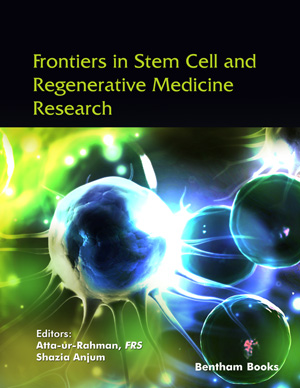
Abstract
Background: Acute lung injury (ALI), which is characterized by inflammation and oxidative stress, is a common complication after cardiopulmonary bypass (CPB). Exosomes from bone marrow mesenchymal stem cells (BMMSC-Exo) have recently been identified as promising treatments for ALI. However, the effects of BMMSC-Exo on inflammation and oxidative stress in CPB-related ALI remain unclear.
Objective: We aim to evaluate the effects of BMMSC-Exo on post-CPB ALI and explore their potential mechanisms.
Methods: We randomly divided rats into three groups: sham, ALI, and ALI+BMMSC-Exo groups. Histological changes were evaluated by lung histo-pathology and bronchoalveolar lavage fluid (BALF). ELISA assay was used to determine inflammatory cytokine levels and oxidative stress.
Results and Discussion: BMMSC-Exo attenuated histological changes (including the invasion of inflammatory cells), reduced the wet/dry (W/D) weight ratio, and downregulated inflammatory cytokine levels, including tumor necrosis factor-alpha (TNF-α), interleukin (IL)-6, and IL-1β. BMMSC-Exo also alleviated oxidative stress. In vitro, we further administered lipopolysaccharide (LPS) to alveolar macrophages (AMs) to mimic the pathological changes of ALI and found that BMMSC-Exo suppressed reactive oxygen species (ROS) production and downregulated the levels of inflammatory cytokines. Mechanistically, BMMSC-Exo inhibited the phosphorylation of nuclear factor-κB (NF-κB), the nuclear translocation of p65, also facilitated the phosphorylation of Akt and the nuclear translocation of Nrf2, while upregulating the expression of HO-1.
Conclusion: In summary, we indicate that BMMSC-Exo reduces CPB-related ALI by alleviating inflammation and oxidative stress. The underlying mechanism may involve the NF-κB p65 and Akt/Nrf2/HO-1 signaling pathways.
Keywords: Acute lung injury, bone marrow mesenchymal stem cells, cardiopulmonary bypass, exosomes, inflammation, oxidative stress.
Graphical Abstract
[http://dx.doi.org/10.1136/thoraxjnl-2015-208023] [PMID: 27660037]
[http://dx.doi.org/10.1186/cc11354] [PMID: 22616947]
[http://dx.doi.org/10.1016/j.intimp.2019.05.019] [PMID: 31254959]
[http://dx.doi.org/10.1016/j.ejphar.2017.10.029] [PMID: 29054740]
[http://dx.doi.org/10.1183/09031936.95.08101647] [PMID: 8586116]
[http://dx.doi.org/10.1155/2021/6653681] [PMID: 34426780]
[PMID: 22040430]
[http://dx.doi.org/10.1371/journal.pone.0025171] [PMID: 21980392]
[http://dx.doi.org/10.1136/thoraxjnl-2011-201059] [PMID: 22106021]
[http://dx.doi.org/10.4103/0366-6999.150106] [PMID: 25635432]
[http://dx.doi.org/10.1186/s13287-019-1189-x] [PMID: 30867053]
[http://dx.doi.org/10.1146/annurev-biochem-013118-111902] [PMID: 31220978]
[http://dx.doi.org/10.1042/BSR20203363] [PMID: 34750610]
[http://dx.doi.org/10.1186/s13054-021-03775-3] [PMID: 34641966]
[http://dx.doi.org/10.5966/sctm.2015-0006] [PMID: 25999518]
[http://dx.doi.org/10.1038/s41401-021-00625-4] [PMID: 33654219]
[http://dx.doi.org/10.1007/s10753-021-01561-5] [PMID: 34596768]
[http://dx.doi.org/10.1016/j.numecd.2021.10.017] [PMID: 34953631]
[http://dx.doi.org/10.1155/2021/2310025] [PMID: 34733401]
[http://dx.doi.org/10.1186/s13287-019-1256-3] [PMID: 31159888]
[http://dx.doi.org/10.1007/s00125-019-05043-0] [PMID: 31740984]
[http://dx.doi.org/10.1038/s41374-018-0073-0] [PMID: 29884910]
[http://dx.doi.org/10.1016/j.bja.2017.11.095] [PMID: 29793583]
[http://dx.doi.org/10.1186/s12950-014-0026-3] [PMID: 25400510]
[http://dx.doi.org/10.1097/00000542-200610000-00013] [PMID: 17006066]
[http://dx.doi.org/10.1016/S0149-7944(02)00775-4] [PMID: 14972232]
[http://dx.doi.org/10.1002/cbin.11441] [PMID: 32770767]
[http://dx.doi.org/10.1007/s00134-004-2179-7] [PMID: 14985958]
[http://dx.doi.org/10.1080/08916934.2021.1966768] [PMID: 34533429]
[http://dx.doi.org/10.1016/j.intimp.2016.01.007] [PMID: 26800098]
[http://dx.doi.org/10.1128/IAI.73.9.5620-5627.2005] [PMID: 16113279]
[http://dx.doi.org/10.1100/tsw.2007.98] [PMID: 17450307]
[http://dx.doi.org/10.1155/2022/7837837] [PMID: 35265265]
[http://dx.doi.org/10.1007/s10753-018-0903-7] [PMID: 30315525]
[http://dx.doi.org/10.1016/j.intimp.2019.05.032] [PMID: 31154290]
[http://dx.doi.org/10.1002/iid3.455] [PMID: 34010516]
[http://dx.doi.org/10.1016/j.fsi.2021.12.042] [PMID: 34968712]
[http://dx.doi.org/10.1016/j.ejphar.2021.174720] [PMID: 34953801]
[http://dx.doi.org/10.1038/s41418-019-0372-z] [PMID: 31209361]












